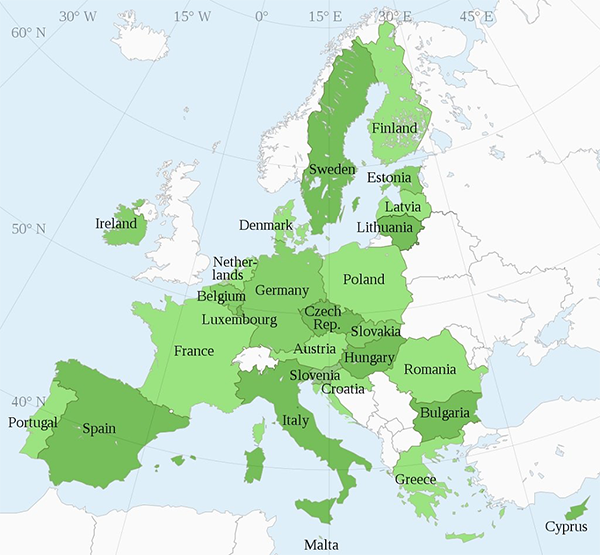The European Union
Part 2: Functions and Governance
The EU also has a space exploration branch, headquartered in Prague, Czech Republic. The European Union Agency for the Space Programme and the European Space Agency form the European Space Council. From the EEC days has come the Common Agricultural Policy, which has a wide variety of products and involves price controls, quotas, subsidies, and other methods of stabilizing markets and guaranteeing productivity and supply. A popular by-product is the availability to consumers of food at reasonable prices. Similar to this is the Common Fisheries Policy, which operates mainly the same way regarding quotas and subsidies.  The EU inherited many operations of the EEC. The governance of the EU resembles that of a shared powers government. Comprising the executive branch are the European Council and the European Commission. The former is nominally more powerful than the latter. Each has a president, and the European Commission president sits on the European Council, as do one representative from each EU member state. Not so much a day-to-day body as an over-arching organ, the European Council meets four or more times a year. Running the daily business of the EU is the European Commission, which proposes laws for the European Parliament to debate and either pass or reject. One member from each EU member state sits on the European Commission, which has a president who serves a five-year term. The EU legislative bodies include the Council of the European Union and the European Parliament. The former has one representative from each EU member state, and from this group comes a president, who serves a six-month term. By far the largest institution in the EU is the European Parliament, which has 705 members, all of whom are directly elected every years by the citizens of the EU member states. The President of the European Parliament serves a term of two-and-one-half years. That person serves as the equivalent of a Speaker in the European Parliament. Two courts make up the EU judicial branch. The high court is the Court of Justice, which ensures uniform application of laws throughout the EU member states. The other court is the General Court, which deals with disputes involving member states. The EU has a monetary branch as well, headed up by the European Central Bank. The Governing Council of this bank sets monetary policy for the EU and plays a role in the economic activity of the central banks of the member states as well. Together, these entites make up the European System of Central Banks. Keeping an eye on all financial activity is the European Court of Auditors, which features one representative from each member state and issues regular reports to the main governing entities. First page > Origins and Development > Page 1, 2 |
|
Social Studies for Kids
copyright 2002–2025
David White



 The EU forms the European single market, which allows the free circulation of capital, goods, people, and services within the borders of the member states. In the same way, the EU has a customs union that applies a common external tariff to all goods coming into the common market. The EU has functioned as one entity, making free trade agreements with other countries around the world. More fundamentally, the residents of the member states can move freely between those member states in order to live, study, work, and retire. Facilitating such free travel are common driver's licenses and vehicle license plates.
The EU forms the European single market, which allows the free circulation of capital, goods, people, and services within the borders of the member states. In the same way, the EU has a customs union that applies a common external tariff to all goods coming into the common market. The EU has functioned as one entity, making free trade agreements with other countries around the world. More fundamentally, the residents of the member states can move freely between those member states in order to live, study, work, and retire. Facilitating such free travel are common driver's licenses and vehicle license plates.
